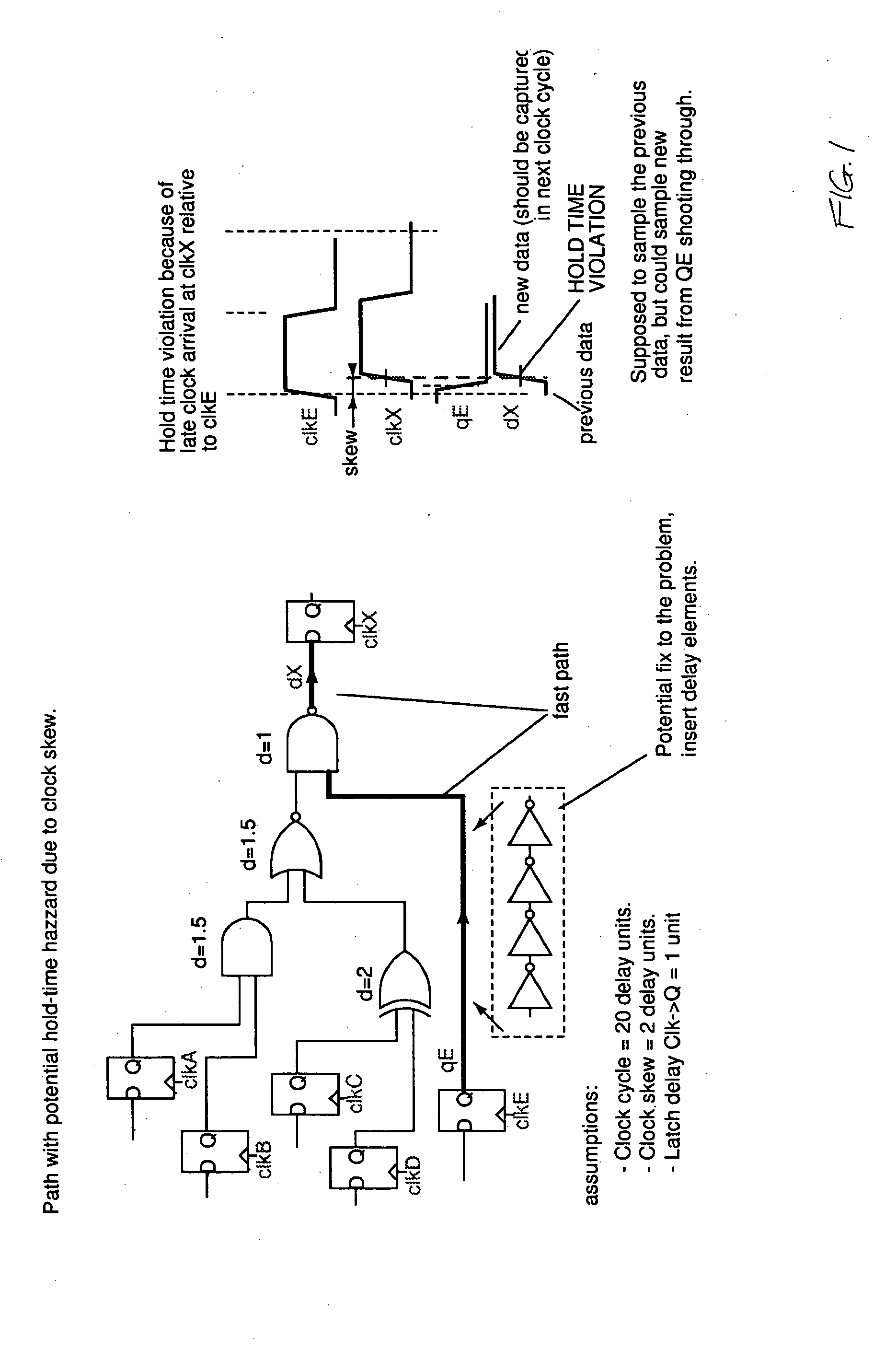Rotary clock synchronous fabric
a synchronous fabric and clock technology, applied in the field of circuit design and layout, can solve the problems of loss of information that associates the parent module, poor run-time of tool, and much worse than linear run-tim
- Summary
- Abstract
- Description
- Claims
- Application Information
AI Technical Summary
Benefits of technology
Problems solved by technology
Method used
Image
Examples
Embodiment Construction
[0043] In one embodiment of the present invention, an existing chip is retrofit with a rotary clock. This helps to close timing, hardly affects placement, requires a few wiring changes. A snake router is used.
[0044] The starting point for Rotary Clock retrofit is a finished physical chip design, created using standard tools and CTS (clock tree synthesis tool). This chip typically has been synthesized, designed and timed based on the assumption of single-phase clocking scheme with edge-triggered DFF storage elements. The design need not meet timing (Static Timing Analysis) as designed as the insertion of Rotary Clock can solve many of the timing violations.
[0045] In this embodiment, the existing chip design is first loaded into the database. Approximately 0% to 5% of distributed “whitespace” on the active area should exist in the standard cell areas of the design to allow for insertion of Rotary Clock cells. Sometimes the required area can be gained just through removal of existing...
PUM
 Login to View More
Login to View More Abstract
Description
Claims
Application Information
 Login to View More
Login to View More - R&D
- Intellectual Property
- Life Sciences
- Materials
- Tech Scout
- Unparalleled Data Quality
- Higher Quality Content
- 60% Fewer Hallucinations
Browse by: Latest US Patents, China's latest patents, Technical Efficacy Thesaurus, Application Domain, Technology Topic, Popular Technical Reports.
© 2025 PatSnap. All rights reserved.Legal|Privacy policy|Modern Slavery Act Transparency Statement|Sitemap|About US| Contact US: help@patsnap.com



